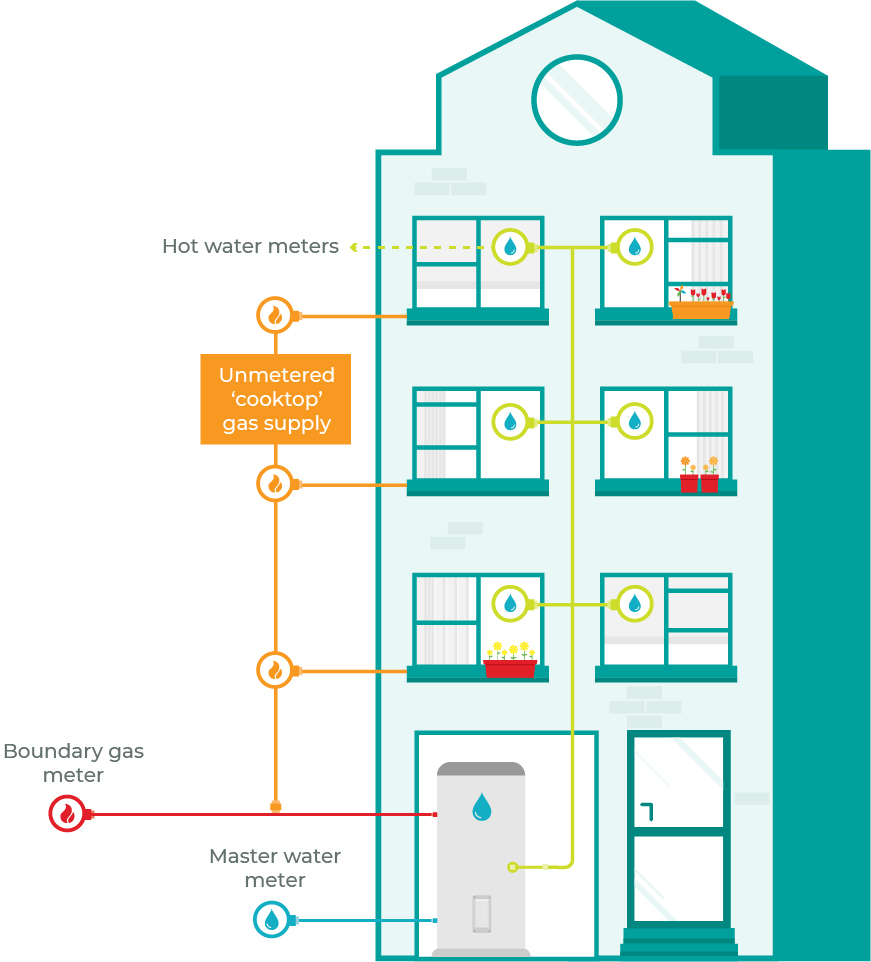-
Home
-
Publications and submissions
-
Reports
-
Spotlight On
-
Hot water embedded networks
- What is a common hot water system?
What is a common hot water system?
In many residential buildings across NSW, owner occupiers and tenants are supplied hot water through a centralised common hot water system, rather than each apartment having its own water heater. These systems are frequently referred to as ‘common hot water systems’, or ‘bulk hot water services’, or ‘centralised hot water services’.
Common hot water systems are most commonly powered by gas but may also use electricity. A typical common hot water system contains the following parts:
- master water meter - where water from the local water provider enters the system
- master gas or electricity meter - where energy from the local network enters the system
- a central hot water heater (or multiple central heaters)
- central piping throughout the building to each apartment
- hot water meters at each apartment.
.jpg)
Traditionally, the gas network provider, Jemena has supported the growth of common hot water systems by taking ownership of the individual hot water meters for each apartment, providing maintenance, meter reading, and billing the hot water usage for each meter directly to the customer’s preferred retailer.
Jemena allocates each hot water meter with a Delivery Point Identifier (DPI) or Meter Installation Registration Number (MIRN). Customers are billed by recording how much hot water runs through the hot water meter at each apartment. Then this data is used to calculate how much gas or electricity was consumed by the system when heating the water that the customer used. Customers are charged for their hot water usage on their retail gas bill.
What is a hot water embedded network?
A hot water embedded network is any apartment building with a common hot water system where the hot water meters for each individual apartment is owned, maintained and read by a third-party, and not a network provider. Each hot water embedded network can be set up differently, and the ownership and responsibility for individual parts of the network could be assigned to unique entities.
There are a variety of business models that currently exist for operating a hot water embedded network. However, most hot water embedded networks are designed to combine a common hot water service with an unmetered gas supply to each apartment, sold as a ‘gas cooktop’ service.
The entity selling hot water within the embedded network is not required to be an authorised energy retailer and it is not required to hold a licence for selling water under the Water Industry Competition Act 2006 (WICA).
Hot water customers in embedded networks are not covered by the energy specific protections contained in the National Energy Consumer Framework (NECF).


